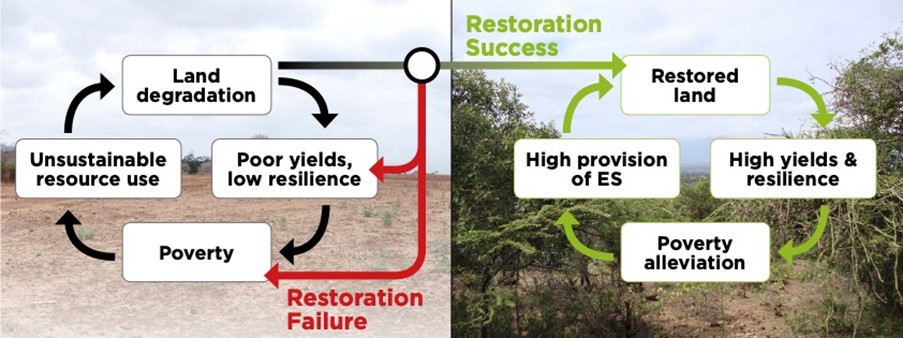Supervisor
David Edwards
Brief Summary
The AFR100 initiative has commitments to restore 128-million hectares of land by 2030 in sub-Saharan Africa. A key question is how different forms of restoration – natural regeneration, plantations, and on-farm approaches – impact carbon and biodiversity in African savanna woodlands. In tropical moist forests, natural regeneration offers improved carbon and biodiversity values versus plantations. Yet most of the restoration in sub-Saharan Africa will take place in savanna woodland systems and will include on-farm agroforestry and silvopasture. This project will use field sampling, global range maps, and remotely sensed carbon products to quantify the carbon and biodiversity co-benefits across the range of restoration approaches in African savanna woodlands.
Importance of Research
To keep global temperature rise to beneath 2C as agreed in The Paris Agreement will require large-scale restoration. The AFR100 initiative has commitments to restore 128-million hectares– an area the size of Germany, France, and the UK combined – by 2030 in sub-Saharan Africa. If well managed, restoration can break the vicious cycle of poverty and land degradation, by recovering key ecosystem functions and services, including carbon sequestration and biodiversity. A key question is what is the most appropriate restoration to deliver upon multiple restoration goals? Our work synthesizing hundreds of studies reveals that natural regeneration offers improved carbon and biodiversity values versus plantations. Yet most of the restoration in sub-Saharan Africa will take place in savanna woodland systems and will include on-farm agroforestry and silvopasture. The problem is that there is extremely limited research on the potential benefits of these on-farm techniques relative to natural regeneration and plantations within African savanna woodlands. This PhD will fill this urgent research gap to provide a critical evidence base on carbon and biodiversity outcomes that will be vital for the massive-scale roll-out of restoration in sub-Saharan Africa through this and the coming decade. It will feed into restoration planning and action via Edwards’ extensive network of government, business, and NGO collaborators within the region.
Project Summary
An urgent research gap is understanding the carbon and biodiversity outcomes of different restoration forms in African savanna woodlands. This PhD project will quantify how natural regeneration, plantations, and on-farm (agroforestry, silvopasture) impact biodiversity and carbon sequestration and storage. It will use a combination of field data collection, preexisting databases, and global range maps to quantify and project species outcomes for birds and trees. It will then use carbon plots combined with remote-sensing products to quantify outcomes of different restoration options for carbon sequestration and stocking over time.
What will the successful applicant do?
- Bring together evidence of species habitat use from field data work and published studies/databases
- Build models that link species occupancy to restoration type and age
- Use species range maps to upscale findings to project restoration outcomes across relevant African savanna woodlands
- Link carbon plot data to remotely sensed carbon products to quantify and upscale the impacts of different restoration forms.
References
Hua F, Bruijnzeel LA, Meli P, Martin PA, McEvoy C, Zhang J, Pena Arancibia JL, Brancalion PHS, Smith P, Edwards DP, Balmford A (2022) The ecosystem service and biodiversity benefits of restoration. Science 376: 839-844
Edwards DP, Cerullo GR, Balmford AP, Chazdon RL, Chomba S, Worthington TA, Harrison RD (2021) Mainstreaming tropical restoration to deliver environmental benefits and socially equitable outcomes. Current Biology 31: R1326-R1341

